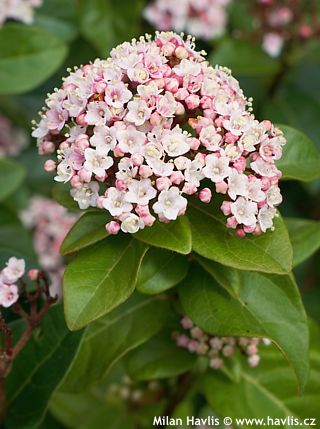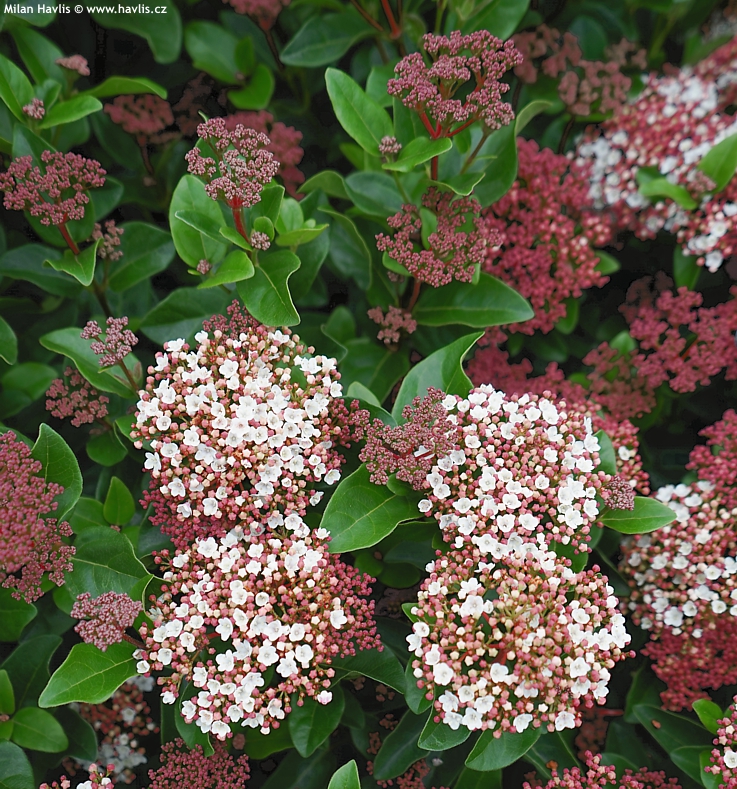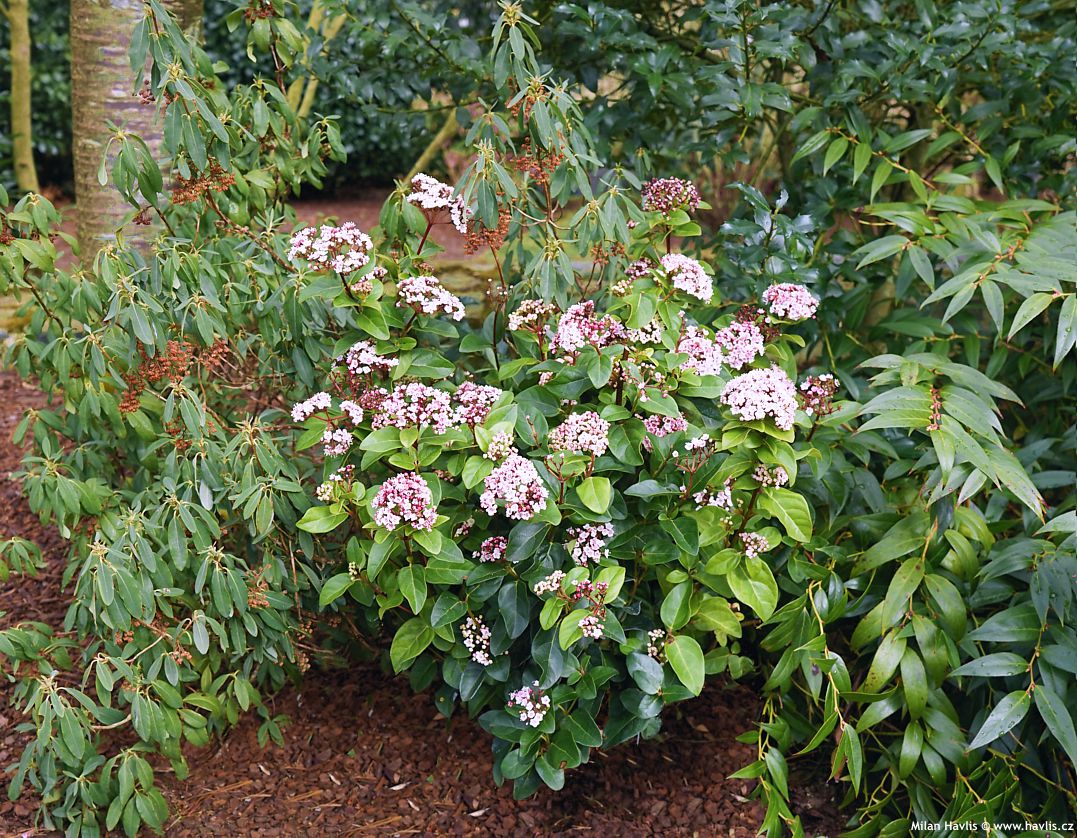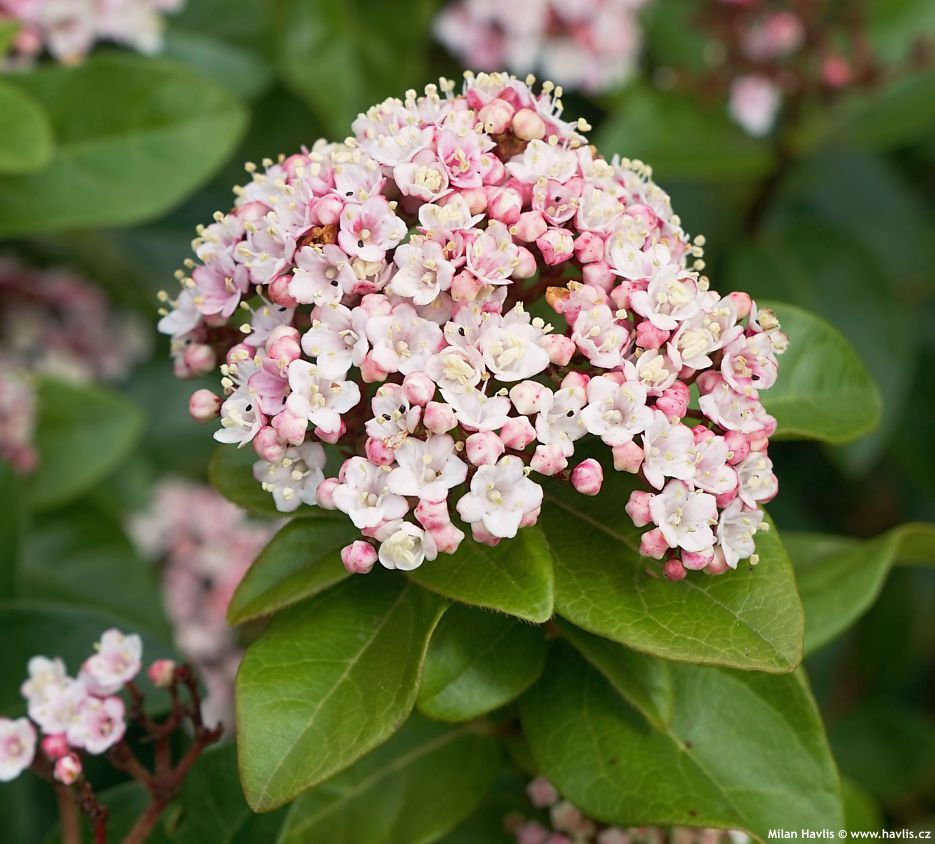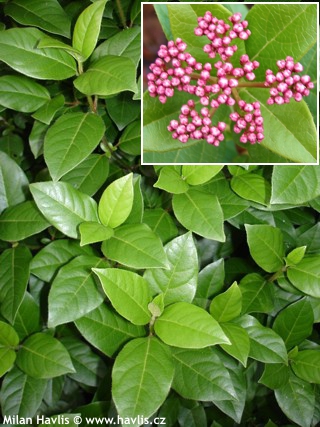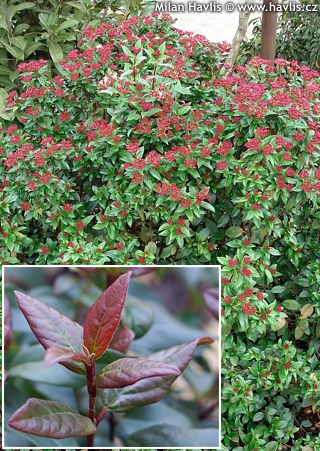Viburnum tinus 'Loren' LISAROSE® laurustinus


Viburnum
Laurustinus is a tough, evergreen shrub from the Mediterranean basin whose native habitat ranges from Portugal and Spain in the west, to Turkey in the east, and from Libya in the south, back to Morocco in the southwest, including nearby islands (Canary, Balearic etc.). It is so versatile to grow in dry and hot climate near Africa as well as in milder parts of Europe with higher humidity and rainfall. Unlike most other shrubs indigenous to dry lands of the Mediterranean that are commonly spiny, prickly, or exhibit another turn-off, laurustinus boasts handsome, leathery but soft, entire (spine-free) foliage. Interestingly, on the other hand it proved hardy enough to grow happily down to USDA zone 7, but let’s check its varieties first.LISAROSE® is a French laurustinus variety bred by Dominique Renvoisé a Gèrard Long in 2005. It is a cross of unnamed selections and the result was a bushy plant with rosy pink buds and white to pink flowers. Granted patents: PP22816 (USA – 2012) and EU 26621 (Europe – 2008).
Apart from flowers, laurustinus is cultivated for its lush foliage and compact habit. It forms broadly upright, dense shrubs that are used in mixed borders as well as informal evergreen hedges and along pathways, especially in warmer zones (7 and up). In USDA zone 6 it grows about 1-1.5m tall and in warmer zones it can be almost 2m tall.
Now, let’s explore its hardiness. Despite its origin many trials proved that it can be cultivated down to USDA zone 6 or even 5b where it is root hardy as a perennial. Even if the top growth is killed by frost it always regenerates from live framework, just prune it after harsh winter and in a couple of months you will again have a beautiful, leafy shrub. In zone 6 it is best to grow it a mixed border combined with other evergreen plants which create a microclimate protecting it from sudden temperature swings. Location hidden from winter sunlight is also recommended there. Our shrub survived our strongest winter of 2006/2007 (-27 °C for 3 consecutive nights) when it was killed almost to the ground but resprouted and in early summer it was some 45-50 cm tall and bushy.
Laurustinus will grow virtually in any free-draining soil, but performs best in fertile, moist soil, acidic pH will help the foliage keep its healthy, deep green colour but is not a must. Mulching is crucial in zone 6 and lower. Small plants should be covered by evergreen boughs in winter. Fully (stem) hardy to -17 °C (zone 7), and root-hardy down to even -27 °C (USDA zone 5b) with protection.
Last update 28-09-2021
Goods are shipped all over Europe. For Russia and U.K. and for further details please read about SHIPPING OPTIONS HERE.
Are you interested in a serious discount for orders NOV-FEB? Check your options here.
THE PRICES INCLUDE VAT of 15%. For quick conversion you can use 1 CZK = approx. 0.04 EUR
- STANDARD QUALITY - Plants of this group are 1st class quality with number of branches and overall density adequate to their size and age, considering they were container grown.
- DE LUXE QUALITY - This label guarantees a luxurious quality of manually selected plants that, compared to their height and age, are exceptionally dense and beautiful.
- EXTRA - These plants are usually mature and bigger specimens with exceptional overall appearance.
- STANDARD (as described in the plant form) means a tree with a trunk of 190-210 cm and a crown at the top, unless specified differently. The commercial size for trees is their girth measured in the height of 1m from ground.
- HOBBY - These plants are of the same quality as our standard-quality plants but younger and therefore cheaper.
- SHRUB - a woody plant with branches growing bushy from the ground level.
- HALF-STANDARD or MINI-STANDARD - a small tree with shorter trunk, its size is usually specified.
- FEATHERED - These are trees with branches growing already from the base of the trunk and up along the stem.
- GRASSES and PERENNIALS - Sizes given usually read the diameter of the pot or the clump, as specified.












